Planks are a great way to work your stomach muscles, but if done incorrectly they might hurt your back. These are three common reasons why your back hurts when you plank and what you can do to fix it!
“It kind of feels like pinching right here.”
“How come that one hurts my back?”
Calling all mamas!
Before you start planking . . . make sure you are doing the CORRECT CORE WORKOUTS.
Introducing my all-new Mommy Tummy Fix program!
- Six phases of workouts to ensure your continued progression
- Large color photos and clear instruction regarding performance, sets, and reps of each exercise to ensure proper performance
- The exact same workout plan my wife used for her amazing results
- Pelvis is tilted too far forward (arched back)
- Hips are too low to the ground (rounded back)
- Hips are too high (pike plank)
Read or watch the video below to see what each of these means!
- Abdominal muscle activation: It’s hard to find another ab exercise that activates all layers of your abdominal wall as much as planks do. If done with correct form it’s one of the most-efficient ways to work your abs.
- They’re easily modifiable: Are planks on your toes too difficult? Drop to a modified plank on your knees! Modified planks are easier but equally activate those abdominal layers.
- You can make them harder, too: holding a static plank too easy? Try planks with a march. Or body saw planks. Or two-point planks. All are great ways to work those abs even harder.
- They’re super effective: six pack abs here we come! Stay steady, stay consistent, and watch your results take off!
- Side planking counts, too: Don’t forget – side planks are a great way to activate your oblique muscles and take results to another level!
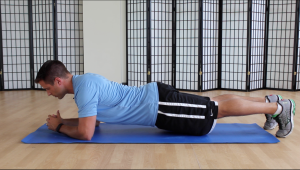 Reason #1: Pelvis tilted too far forward (arched back): I would say that 95% of the time this one is the cause of back pain while planking.
Reason #1: Pelvis tilted too far forward (arched back): I would say that 95% of the time this one is the cause of back pain while planking.
When people get down into a plank position, most of them align everything properly (shoulders – hips – knees should be a straight line), but the common tendency is to let your stomach sag towards the ground.
This creates a significant arch in your lower back and people complain of a “pinching” in their lower spine. In this position you’re relying primarily on your back vertebrae and spinal ligaments for support rather than the core muscles which should be holding you up.
How to fix an arched back plank: Concentrate on keeping your back in a “flat” or “neutral” position. Engage your quads, butt, and abs to “tilt” or “roll” your pelvis backwards thereby flattening your back out and eliminating the pinch-inflicting arch.
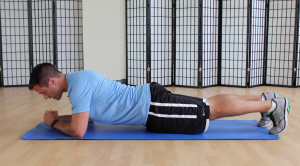 Reason #2: Hips too low to the ground (rounded back): The second-most common error I see in people who plank is that they let their pelvis drop too much towards the floor.
Reason #2: Hips too low to the ground (rounded back): The second-most common error I see in people who plank is that they let their pelvis drop too much towards the floor.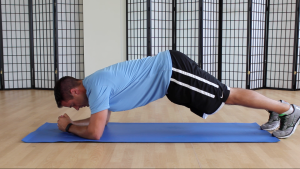 Reason #3: Hips too high (butt in the air or “pike” plank): The last common problem I see is when the butt/hips are way above what should be the straight shoulder line. This is especially a common problem when fatigue starts to set in.
Reason #3: Hips too high (butt in the air or “pike” plank): The last common problem I see is when the butt/hips are way above what should be the straight shoulder line. This is especially a common problem when fatigue starts to set in.You can’t miss these!
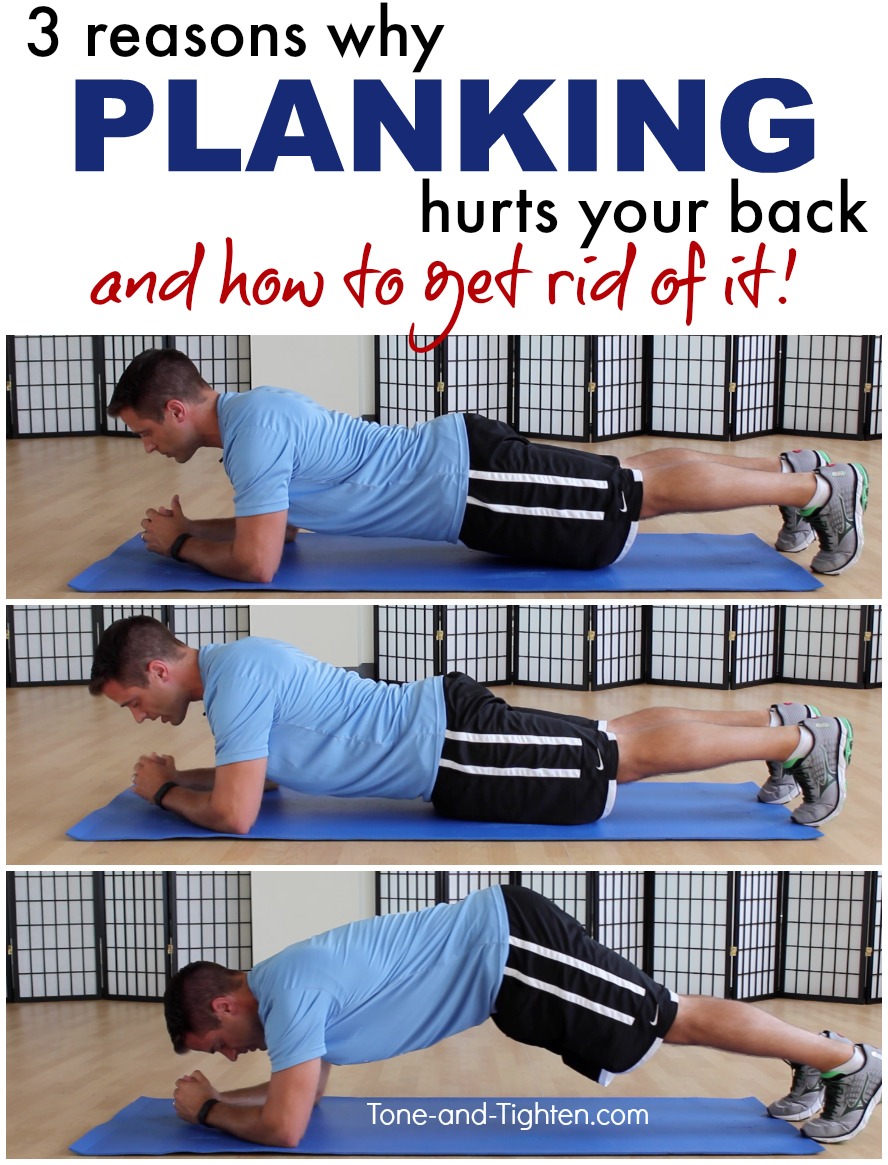

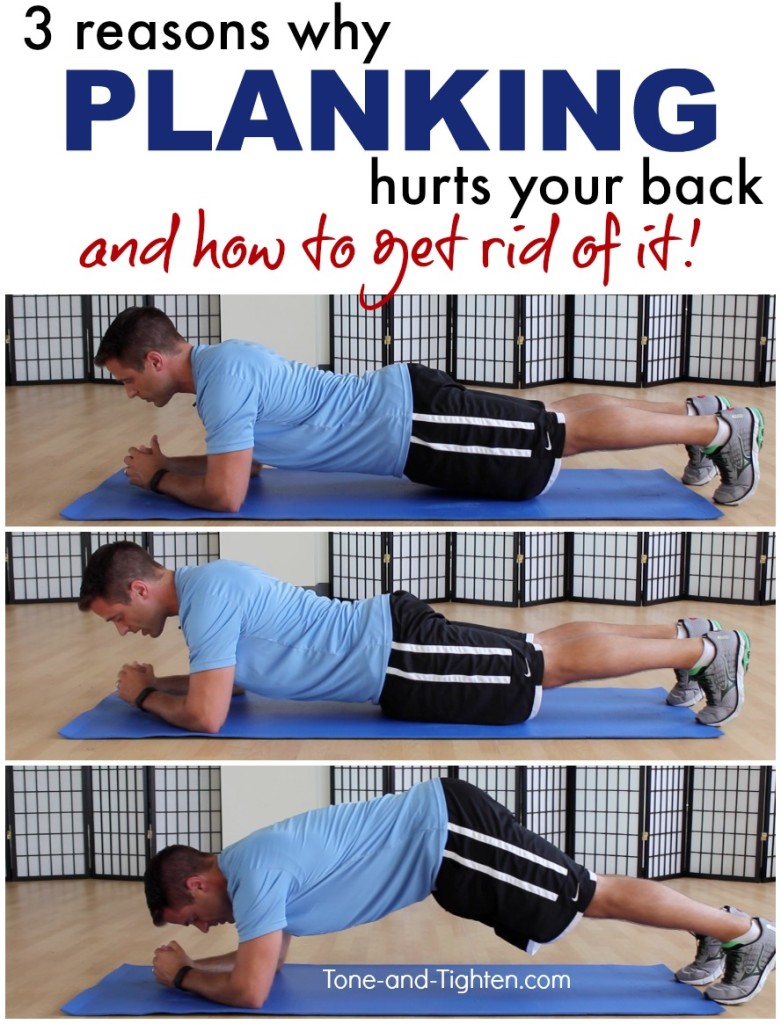
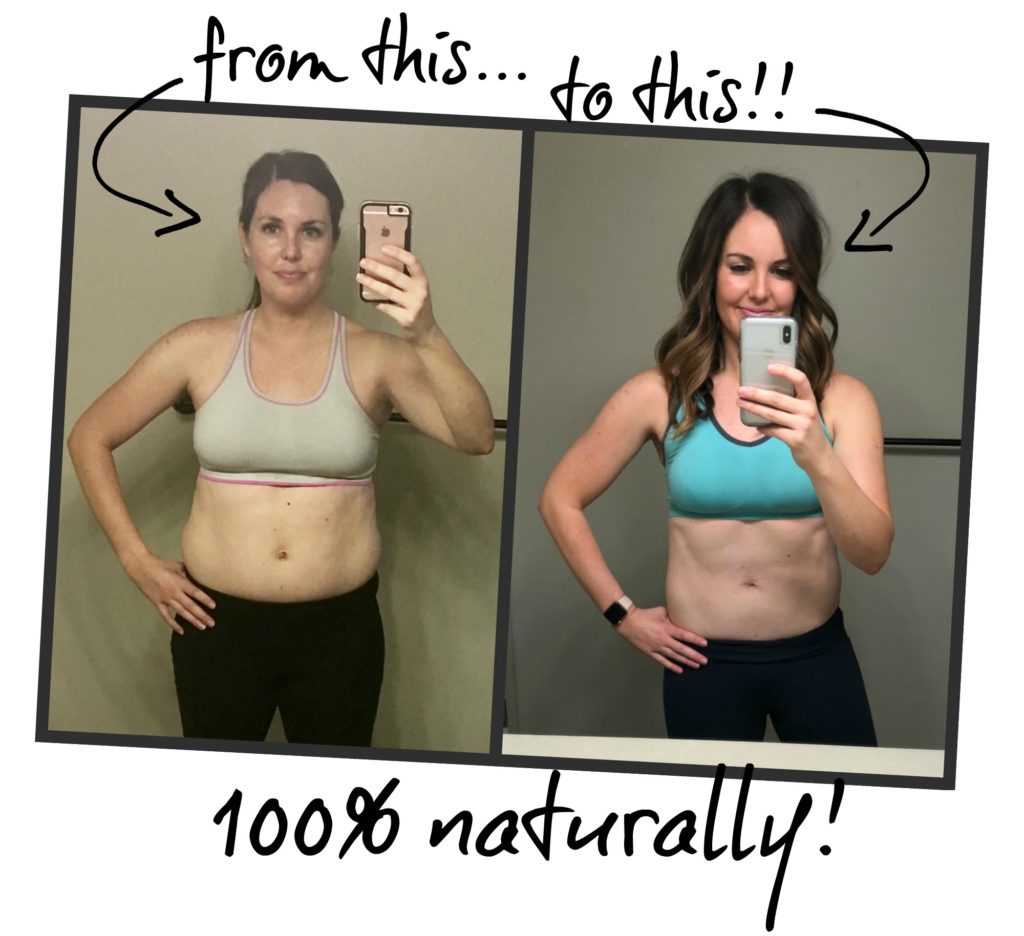
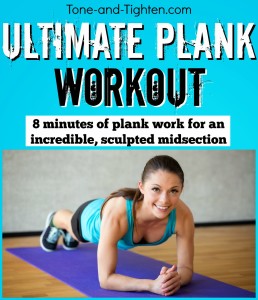
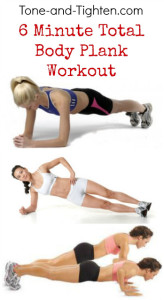
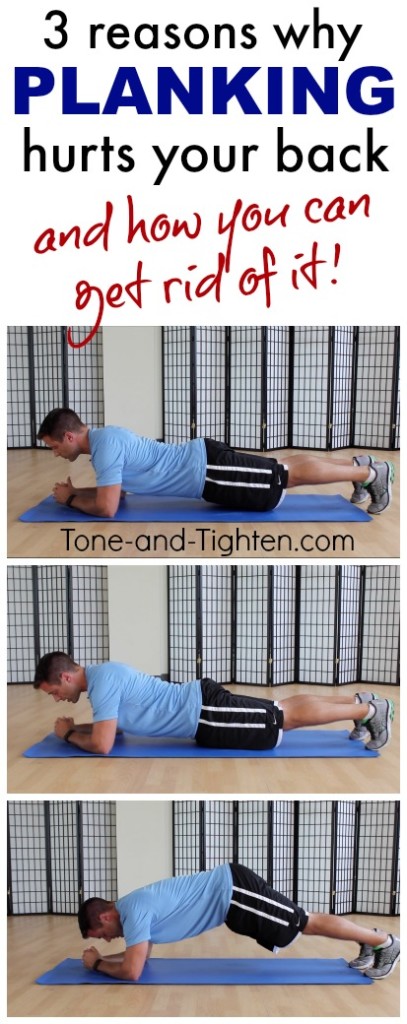
Thank you for this video! Helped me see what I was doing wrong and correct going forward. Doesn’t help to do an exercise if I don’t have proper form! Thanks again!
Thanks so much Laura! I’m stoked this helped you out! Happy planking!
Help me do this exercise right my lower bank hurt
Hope the video helps, Pamela! Try to keep your spine in a neutral position with your core muscles engaged.
Very helpful video! The examples were clear, and I can’t wait to try a plank in front of a mirror to check out my form. Thank you!
Awesome, Amy! Thanks so much! I hope you find the info useful.
Thank you, this video helped a lot!! Just came back home from the gym and felt some major pain by my lower back and then I realized my planking was wrong cus its not the first time happening. Ill hopefully do it right next time thanks to this article!
Awesome, Shaz! I’m glad you found the article and hope you get it straightened out! Thanks for commenting!
25yrs ago I had an accident and crouched my sacro-illiac joint. I’ve never recovered fully from it. My Nephew suggested I tried the plank exercise. Really hard but still hurt my lower back. I’m ex military and was doing them how we did press ups with my head up but also definitely lowering the pelvis. AWESOME video. Thank you so much, it has really encouraged me now I know how to do them properly.
What an awesome comment, Nigel! I’m thrilled you found this video and that the information has enabled you to get back to doing this exercise. You’re welcome, and thanks so much for commenting!